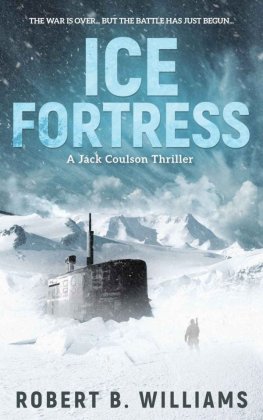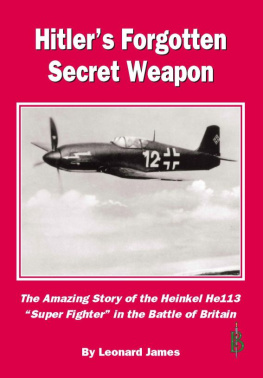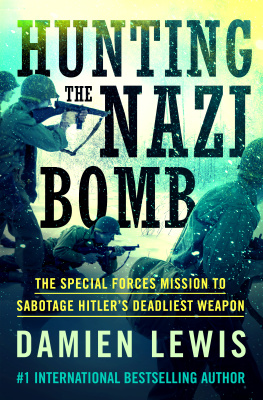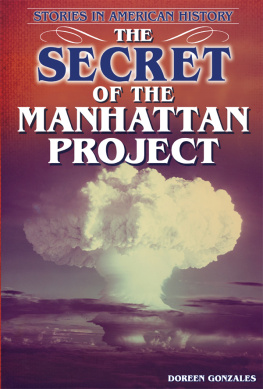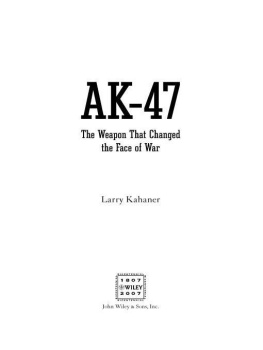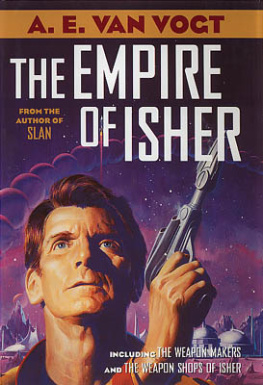Jack Couffer - Bat Bomb: World War IIs Other Secret Weapon
Here you can read online Jack Couffer - Bat Bomb: World War IIs Other Secret Weapon full text of the book (entire story) in english for free. Download pdf and epub, get meaning, cover and reviews about this ebook. year: 2008, publisher: University of Texas Press, genre: Non-fiction. Description of the work, (preface) as well as reviews are available. Best literature library LitArk.com created for fans of good reading and offers a wide selection of genres:
Romance novel
Science fiction
Adventure
Detective
Science
History
Home and family
Prose
Art
Politics
Computer
Non-fiction
Religion
Business
Children
Humor
Choose a favorite category and find really read worthwhile books. Enjoy immersion in the world of imagination, feel the emotions of the characters or learn something new for yourself, make an fascinating discovery.

- Book:Bat Bomb: World War IIs Other Secret Weapon
- Author:
- Publisher:University of Texas Press
- Genre:
- Year:2008
- Rating:5 / 5
- Favourites:Add to favourites
- Your mark:
- 100
- 1
- 2
- 3
- 4
- 5
Bat Bomb: World War IIs Other Secret Weapon: summary, description and annotation
We offer to read an annotation, description, summary or preface (depends on what the author of the book "Bat Bomb: World War IIs Other Secret Weapon" wrote himself). If you haven't found the necessary information about the book — write in the comments, we will try to find it.
How an oddball cast of characters tried to create a bizarre weapon in World War II.
Bat Bomb: World War IIs Other Secret Weapon — read online for free the complete book (whole text) full work
Below is the text of the book, divided by pages. System saving the place of the last page read, allows you to conveniently read the book "Bat Bomb: World War IIs Other Secret Weapon" online for free, without having to search again every time where you left off. Put a bookmark, and you can go to the page where you finished reading at any time.
Font size:
Interval:
Bookmark:
BAT BOMB
Jack Couffer
World War Ws Other Secret Weapon

Copyright 1992 by the University of Texas Press
All rights reserved
Printed in the United States of America
First edition, 1992
Requests for permission to reproduce material from this work should be sent to Permissions, University of Texas Press, Box 7819, Austin, TX 78713-7819.
 The paper used in this publication meets the minimum requirements of American National Standard for Information SciencesPermanence of Paper for Printed Library Materials, ANSI Z39.48-1984.
The paper used in this publication meets the minimum requirements of American National Standard for Information SciencesPermanence of Paper for Printed Library Materials, ANSI Z39.48-1984.
Library of Congress Cataloging-in-Publication Data
Couffer, Jack.
Bat bomb : World War IIs other secret weapon / Jack Couffer. 1st ed. p. cm.
Includes bibliographical references (p. ) and index.
ISBN: 0-292-71872-1
1. BatsUnited StatesWar useHistory20th century. 2. World War, 1939-1945. 3. Incendiary bombsHistory20th century. 4. Couffer, Jack. 5. World War, 1939-1945Personal narratives, American. I. Title.
UH100.5.B38C68 1992
940.544dc20 92-11888
CIP
Grateful acknowledgment is made to the following for permission to quote from various materials and/or conversations: Ozro B. Wiswell for quotes from a telephone conversation; Denny Constantine for material regarding rabies and bats; Harpers Magazine for permission to reprint material from the article, One Way to Cripple Japan by Charles L. McNichols and Clayton D. Cams, copyright 1942 by Harpers Magazine. All rights reserved. Reprinted from the June issue by special permission.
Photographs Following Page
SOME WHO WERE THERE may question details in my reminiscence, and through times hazing parts of the story are admittedly knotty points in my memory. The quotes from documents are correct to the letter, and the places and situations are as true as time, the tide of recall, and the ebb and flow of keepsakes of the mind can ever be (sources for government documents are listed in the references). Some events, even certain conversations, flash back clearly, as if Id tied a string around my finger to help hang on to them. Other mental souvenirs come back less clearly, sometimes helped by a nudge from my friends. I took no notes and the remarks and opinions are not presented as verbatim statements, but are rather intended to express the gist of what people had to say. If some of the original authors of these words find them garbled or unrecognizable, I apologize and admit the fault is probably mine.
When I started to jot down my recollections it was only as an exercise to record the rather curious history of yet another in a long list of oddball wartime operations. I didnt realize that there was a story woven into the tapestry of haphazard-seeming incidents and that lacing it all together would make a drama come clear. I didnt know that I had been cast in a skit of hardly earthshaking importance, but a story nonetheless of intrigues, double-crosses, loyalties, loves, of larger human strengths and weaknesses.
All of this happened nearly fifty years ago, so if Im muddled here and there, I hope I can be excused. But this is the way I remember it.
THANKS TO JIM CHESTER, whose researches have helped me to look back and separate myths from facts; and to Harry J. Fletcher, Ray Williams, Jack von Bloeker, and Devil Bill Adams, who helped me remember. To Denny Constantine, the real batman. To Doc Adams, Tim Holt, and Eddie Herold, now gone. And to the other members of the project teamI hope they can relive with me this experience of long ago with a wistful sense of purpose and fun.
BAT BOMB
This Man Is Not a Nut
FOG CLUNG to the hills, wet with winter grass; vague shapes plowed through the mist. They could have been Pleistocene beasts, like the dwarf elephant whose bones I was assisting the senior field collector to excavate, but the shadows were only cattle. We worked on the sheer side of a clay-banked gully where the remains had lain for half a million years. The ivory tusk-tip had been exposed by the last rain, and with pick, trowel, and brush we slowly brought the entire skull to light. In a plaster jacket it would go into the research collection of the Los Angeles County Museum, where I was a part-time student assistant.
We had been camped for a week near the end of Santa Rosa Island off the coast of Santa Barbara, twenty miles from ranch headquarters and the nearest people, or so we thought. Then the shapes of two riders materialized from the fog. They stopped at the arroyo edge above us, classic cowboys, with Mexican chaps and wide-brimmed hats dripping with fog.
They told us to fetch you back to the ranch, the elder cowboy said. We got horses at your camp.
But Ive just finished my survey and weve started to work, my boss said. Weve got another ten days.
No, you aint. The cowboy puffed his Camel (this was in a time before cowboys all smoked Marlboros) and swung one leg over his ponys neck, perching high with his boot in his lap. The foreman said bring you back, so I gotta bring you back, jque not
Whats it all about? my boss asked.
Quin sabe? Maybe something to do with Pearl Harbors been bombed?
The offhand slouch, the cowpokes long drag on his cigarillo, conscious mannerisms of nonchalance, contrasted effectively with this seemingly important information.
Wheres Pearl Harbor? I asked.
In those first confused days of the war it was expected that the Japanese would follow up their success in Hawaii with attacks on the U.S. mainland. West coast harbors were closed with antisubmarine nets and all boat traffic was stopped. Our museum field party of seven scientists and helpers was stuck on the island. In my adolescent innocence I thought our situation was exciting, and the drama of being marooned and a week late in getting back to high school after the Christmas break made me the first one in my class with an honest-to-God war story.
I spent mornings in the structured classes of Glendale High School, afternoons as a student assistant in the labs at the museum, where I assisted the various biology curators and was now learning to collect, prepare, and catalog small mammals for the research collections in the Department of Mammalogy. My mentor in this, my favorite niche, was Jack C. von Bloeker, Jr., an authority on the order Chiropterabats. His enthusiasm for these flying mammals, so profoundly associated with spooks, ghosts, witches, evil, and all sorts of weird happenings of mysterious and supernatural kinds, was dangerously contagious. All of this dramatic symbolism associated with bats was romantically fetching. I soon became seriously infected with von Bloekers disease.
Our collecting forays took us scuffing through the musty belfries of old churches. With flashlights poking under highway bridges in Los Angeles we searched out colonies of Myotis, and from abandoned mine shafts and rock cracks in the nearby desert we collected specimens of the sixty-five or so species and subspecies of bats then known in North America. One kind, the spotted bat, rarest of modern mammals, and to my bat-besotted mind the most beautiful of creatures, was known to science from only four specimens. All had been encountered as the result of some freakish accident, as if occult forces had caused the demiseone had drowned itself in a railway water tank, another had impaled its skull on the wicked spine of a barbed wire fence. I yearned to discover the hidden secrets of this extraordinary animalwhere and how did it live? Why had so few been found over so wide a diversity of habitats?
Next pageFont size:
Interval:
Bookmark:
Similar books «Bat Bomb: World War IIs Other Secret Weapon»
Look at similar books to Bat Bomb: World War IIs Other Secret Weapon. We have selected literature similar in name and meaning in the hope of providing readers with more options to find new, interesting, not yet read works.
Discussion, reviews of the book Bat Bomb: World War IIs Other Secret Weapon and just readers' own opinions. Leave your comments, write what you think about the work, its meaning or the main characters. Specify what exactly you liked and what you didn't like, and why you think so.

